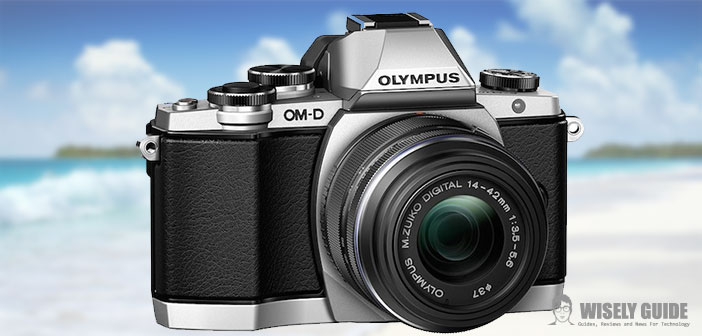As widely anticipated, Olympus has just officially introduced the new OM-D E-M10. This combines the image quality of the E-M5 to the processor power of the E-M1. It’s a smart camera that combines many of the best features of the series OM-D with a very attractive price.
The dimensions are very compact (119 x 82 x 46 mm), but the weight is substantial (about 400 grams) because of the build quality and materials used, being made entirely of metal.
It comes in a kit with the new electronic retractable lens M.ZUIKO DIGITAL 14-42mm 1:3.5-5.6 EZ, which takes up very little when closed. The interior dimension of the camera with this lens is on average lower than that of a single camera body without lens.
But size is not the only thing that matters, and the Olympus E-M10 is appreciated for quality all round. It has a built-in viewfinder with fast and fairly broad 1,440,000 points.
This has the Adaptive Brightness already seen on the flagship E-M1 which allows him to show the dark and bright images in much the same way as they would be perceived by the naked eye. In addition to this, display has a classic rear 3 ” touch screen and tilt.
For the Fast AF autofocus system is based in 81 areas that cover the entire frame. It is fast as all Olympus and has features such as Super Target and AF Small Spot AF that allowed you to zoom and focus even the smallest parts of the image. The burst of up to 8 fps well. For the first time on an OM-D is also available in a small pop-up flash, integrated into the space above the viewfinder.

The 16MP sensor is the same as seen in the Olympus E-M5, with sensitivity 200-25600 ISO, while the image processor is TruePic VII of the E-M1. Since it also inherits the Wi-Fi module for remote control and rapid sharing of images. Among the accessories available even an ergonomic grip that enhances the grip and slightly increases the height of the body for those with large hands.

The only real renunciation than other OM-D is the stabilization system, here is not to 3 and 5-axis machining. This reduction is not as dramatic because it is declared as able to compensate for 3.5 stop while the system with 5-axis we stood at 4. It seems really a camera designed to please everyone, and the price is lower than the others in the range.
This is expected to be about $650-$700 for the body only and $850-$900 with the kit lens 14-42 standard. At the same time, Olympus has also made official the new 25mm f/1.8 lens and a fisheye f / 8 to 9mm only 2.2 cm deep.

